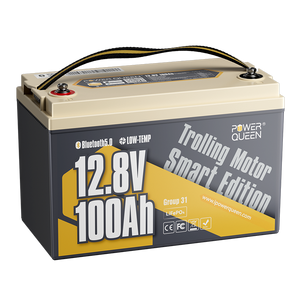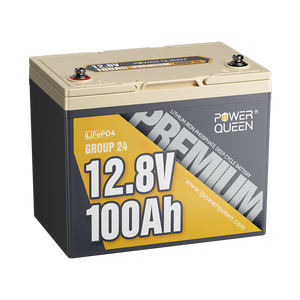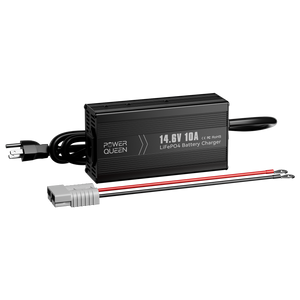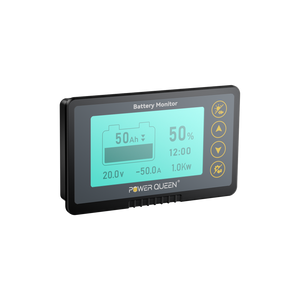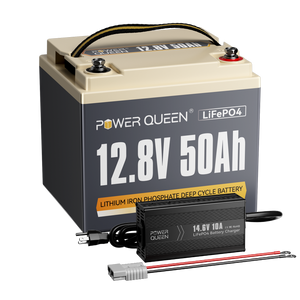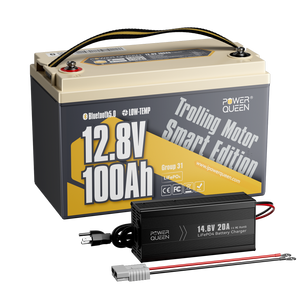Can You Charge Solar Batteries without Charge Controller?
Solar battery charging systems rely on photovoltaic solar panels to collect energy from the sun and charge lead-acid or lithium batteries for off-grid power storage. A charge controller is a crucial component that regulates the voltage and current going into the batteries. But can solar batteries be charged without a charge controller?
What is a Solar Charge Controller?
A solar charge controller is an essential device for virtually any solar power system that charges batteries, normally there are 2 types MPPT and PWM popular in the market. It regulates the voltage and current coming from the solar panels going to the battery bank to prevent overcharging.


Overcharging can damage batteries quickly and pose safety risks. By managing the power flow into batteries, charge controllers maximize battery lifespans and system performance. They ensure solar energy systems can operate safely and efficiently for years of reliable off-grid power or backup.
Modern controllers use advanced technology for precise battery regulation and protection through multi-stage charging and overvoltage prevention. Selecting the properly sized solar controller is critical as well.

Benefits of Using a Charge Controller
Protects Battery Lifespan
One of the main benefits of a solar charge controller is protecting your battery bank from overcharging. Without precise regulation, excess solar energy can overvolt batteries, accelerating corrosion and shortening their lifespan. A controller maintains optimal charging levels to maximize battery life.
Precise Regulation
Solar charge controllers allow you to set voltage and current thresholds tailored to your system's power needs. This balanced multi-stage charging avoids wasting solar power or overworking batteries. Chips in MPPT controllers also boost efficiency.
Prevents Reverse Current
At night when solar panels aren't generating, batteries can discharge current back through panels without regulation. A controller opens the circuit to stop reverse flow, decreasing self-discharge and preserving off-grid power reserves for when you need them most.
Safety Feature
Runaway overcharging poses fire and explosion risks with unregulated voltage. Solar controllers actively monitor charging status to divert or shut off excess power, enhancing safety for equipment and users. Fault indicators identify any issues early on.
Maximizes Reliability
By shielding batteries from damage and optimizing charging, solar charge controllers make the whole off-grid system last far longer. This delivers significant long-term savings versus frequent battery replacements without prudent charge control management.
2 Situations You May Not Use a Charge Controller
Minimal Solar Input
With very small solar panels producing less than 10 watts, the low charging current may not cause issues on its own if diligently monitored. Some hobbyists use tiny 5W panels without a controller to slowly top off small battery banks. However, this method lacks proper regulation and isn't suitable for larger, high-demand off-grid systems.
Integrated Protection
Some compact portable solar panels have built-in microchip controllers that regulate voltage when charging via USB. As long as the user only charges through these regulated ports as intended, the panel's internal protections may fulfill the role of an external controller for small intermittent charging applications. Of course, most permanent home installations still require a standalone controller for safety and performance.
In general, only minute off-grid powersystems may potentially forgo a dedicated solar charge controller. Proper controller usage becomes essential to prevent damage or fires for applications handling higher solar capacities and powering substantial loads over long periods.
How to Charge Solar Batteries without a Charge Controller
It is possible to directly connect solar panels to batteries without a charge controller. However, this approach carries significant risks. Batteries for solar systems are typically rated for 12V or 24V and have a defined voltage window for safe charging, such as 11.8-14.4V for 12V batteries.
Most 100W solar panels produce 18-20V maximum power voltage, exceeding what batteries can accept. Without regulation, overcharging occurs as batteries continue receiving current even at full capacity. This can cause the electrolyte to boil over or the battery to explode in severe cases.
Some mitigation methods come with limitations. Adding a diode prevents reverse current but does not regulate voltage, increasing damage potential. Manually timing charges requires constant monitoring, reducing practicality.
While hobbyists may directly connect small solar and batteries, most permanent installs demand a more robust solution. Charge controllers prevent hazards by maintaining charge voltage within manufacturers' specified ranges. They maximize battery health and lifespan.
Overall, the risks of unregulated charging generally outweigh any convenience from bypassing a controller. Using the appropriate charge controller sized for the battery bank and solar array ensures a safe, reliable system optimized for performance over many years. This approach avoids dangers and expenses from battery damage or failure.
How to Size Charge Controllers Correctly?
Here are some tips on how to properly size a solar charge controller:
Match Voltage
Make sure to select a charge controller that matches the voltage of your battery bank. For home systems this is typically 12V, 24V or 48V. Controllers are available for all common battery bank voltages.
Calculate Amperage
Add up the short circuit current (Isc) ratings on your solar panels and multiply by 1.25 to allow a buffer. Compare this to the maximum current rating of the charge controller and choose a controller that can handle more amps than your total.
Leave Room to Expand
It's smart to size your solar charge controller to allow for potentially expanded solar capacity in the future. Choosing a controller rated for 20-30% more solar input than you currently have allows adding more panels later easily.
Temperature Compensation
If operating in very hot climates, the controller and solar panels may put out more current than their rating. Using a temperature compensating charge controller ensures it can handle warmer condition output.
Higher Wattage Systems
For large solar arrays with long wiring runs, higher voltage MPPT controllers lead to less power loss across distance. Carefully consider wattages when choosing PWM or MPPT for big installs.
By accurately accounting for present and future solar panel amperage and selecting the appropriate voltage and technology, you can size your solar charge controller optimally for any system scale or location.
2 Reliable Ways To Charge LiFePO4 Lithium Solar Batteries without Charge Controller
Here are two reliable ways to charge LiFePO4 lithium batteries without a solar charge controller:
Utilizing a LiFePO4 Lithium Battery Charger
Many standalone LiFePO4 battery chargers on the market can directly charge lithium batteries using standard household power. They regulate voltage, current, and incorporate safety features like over-voltage and reverse polarity protection. As long as the charger is appropriately sized for the battery bank and uses a calibrated lithium charging profile, it can effectively perform the same role as a solar controller.

2. Generator/Alternator Output
If portable power is needed, a gas generator or vehicle alternator can reliably charge lithium batteries when a solar charge controller is unavailable. Connecting the positive and negative terminals of a properly discharged battery straight to the regulated output of a running generator or alternator charges the battery safely. Continuous monitoring is still recommended to avoid overcharging. Inverter/charger combo units with built-in controllers also work well for generator charging.
Some additional notes on these methods
- Manual timing of charges is still recommended to prevent overcharging.
- Diodes can be added for generator/alternator charging to prevent reverse current drain.
- Temperature sensors help optimize charging for colder climates.
- These methods lack long-term power harvesting capabilities of true solar charging.
- So in off-grid situations where no solar controller is an option, stand-alone LiFePO4 battery chargers or generator charging provide controllable alternatives to charge lithium batteries safely.
Frequently Asked Questions
1.Do you need a solar charge controller to charge battery?
Yes, it is highly recommended to use a solar charge controller when charging batteries from solar panels. The controller regulates voltage and current to safely charge the batteries.
2.Can I connect solar panel directly to battery without charge controller?
You can connect them directly but it's not recommended due to risks of overcharging. A controller is needed to regulate voltage within the battery's limits.
3.Can solar panels work without charge controller?
Solar panels can still generate power without a controller, but the power cannot be safely used to charge batteries. A controller is essential for stable, long-term battery charging.
4.Do I need a charge controller for a 100w solar panel?
Yes, a charge controller is required even for a single 100W panel to safely charge batteries. The controller prevents overvoltage and carefully manages the charging process.
5.Why do we need solar charge controller?
Charge controllers regulate voltage and current, prevent overcharging, extend battery life, maximize solar energy harvesting, provide safety protections, and properly charge batteries through multi-stage absorption and float processes. They are critical for reliable solar power systems.
Conclusion
While theoretically possible to charge solar batteries without a charge controller in very limited scenarios, the risks of damage, fire and reduced efficiency make it strongly inadvisable for virtually all practical off-grid solar power installations. Proper system design always includes battery charging regulation fit for the components and intended use. Combined with other critical elements like inverters, wiring and overcurrent protection, a charge controller helps solar energy work safely and productively for homes, cabins, boats or other battery-powered devices.




